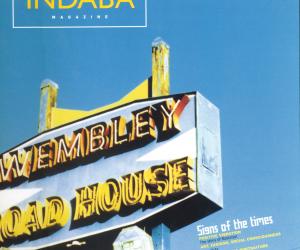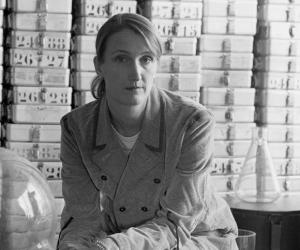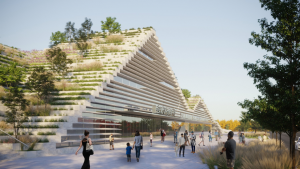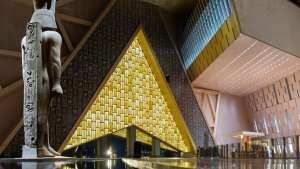First Published in
"Living without shelter for prolonged periods rapidly deteriorates physical and moral health. The lack of adequate sleep increases stress, weakens the immune system and accelerates the loss of identity and de-socialisation." - Lucy Orta
"The staging of a social bond is the common denominator linking Lucy Orta's different projects and perfectly reflects her transverse approach to poetic expression. Trained as a fashion designer, she has, since 1992, brilliantly addressed issues of relational aesthetics, her principal field of intervention being the personal space of the individual fighting for survival in adverse conditions. Her Refuge Wear and Nexus Architecture interventions are effective tools in the struggle against exclusion and combine architecture, body art, street theatre, fashion, social therapy, formal poetry and ideological activism. The titles of her principal projects, which function both as social scenarios and art works, speak for themselves: Nexus Architecture, Refuge Wear, Modular Architecture, Commune Communicate, and Citizen Platform." - Pierre Restany
"Lucy Orta's Modular Architecture consists of temporary, portable dwellings made up of sections, panels or "units" that can be combined and re-combined to make a number of different forms. A version of the structures created with children and students during the Dwelling Workshops, Orta's own constructions mix the solidarity principle of Collective Wear with the prototype function of Refuge Wear. For example: four men and women travel separately during the day, each wrapped in a waterproof, insulated, hooded body-suit made of aluminium-coated polyamide, in which myriad pockets store water, food and medicine. At night, these four people meet in a designated area - or by chance - and, after removing their body-suits, they zip them all together to make a roomy, warm four-person tent. Hoods dangle at odd angles from the tent's peak, empty legs "legs" are pegged to the ground. The next day or during the night, after every one has slept, they unzip the tent and climb into their bodysuits to continue their travelling. Later they meet again or meet with other people and the same tent, or another, is reconstructed." - Nomadic Nights - Cartier Foundation
"This project marks the beginning of Lucy Orta's career as an artist. She was inspired to create her first "Body Architecture" after thinking about the needs of Kurdish refugees in Iraq at the time of the Gulf War, and she realized instantly that the portable housing she had in mind held a poetic significance for any displaced or migrant people, including the homeless on the streets of Paris, where she lives. People who are forced to travel by foot, by day or by night, with little food or water security and little excess energy for carrying their belongings, would need structure that could minimize weight and maximize versatility. Visible and hidden pockets might hold water, food and papers. A small brick stove, such as the kind used for outdoor camping, could serve as an easy and energy-efficient means of cooking meals." - Cite de Refuge
"Lucy Orta's work brings art back into the realm of the everyday, back into ritual, healing and the body. It is a type of modern cave-painting where each person carries his own cave upon his back, urban bivouacs or teepees whose residents know every niche and the many ways a body can fit and move inside. Or it is advertising with nothing to sell only many questions to pose. A call to revolution with no manifesto. An art designed not to implant ideas but to trigger an endless series of ideas in others, ideas that the artist cannot predict or plan for. Orta seeks produce transformations in ways that others have attempted in the past, not through slogans, but through intimate, often physical, contact and voluntary participation. This makes it the rarest of projects today: a patient art that evolves along with its on-lookers and users." - Jen Budney













